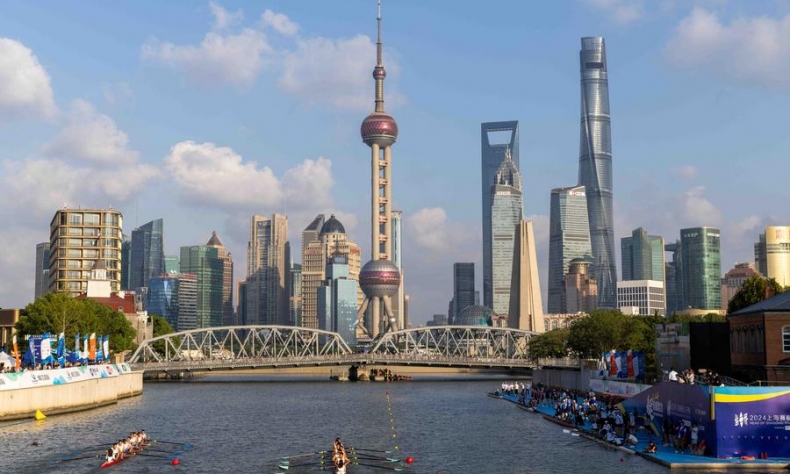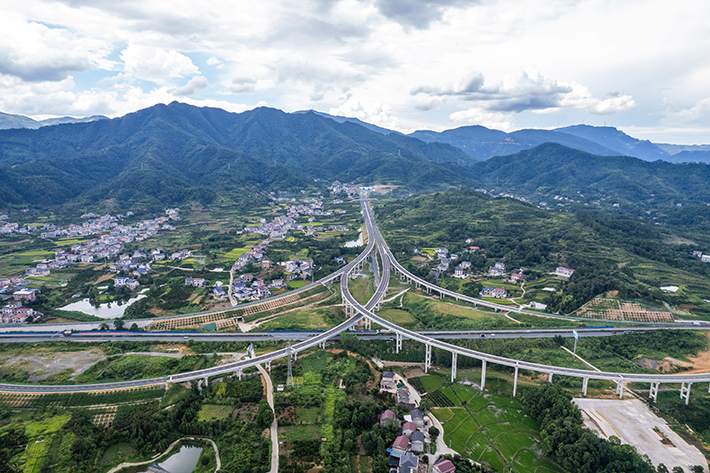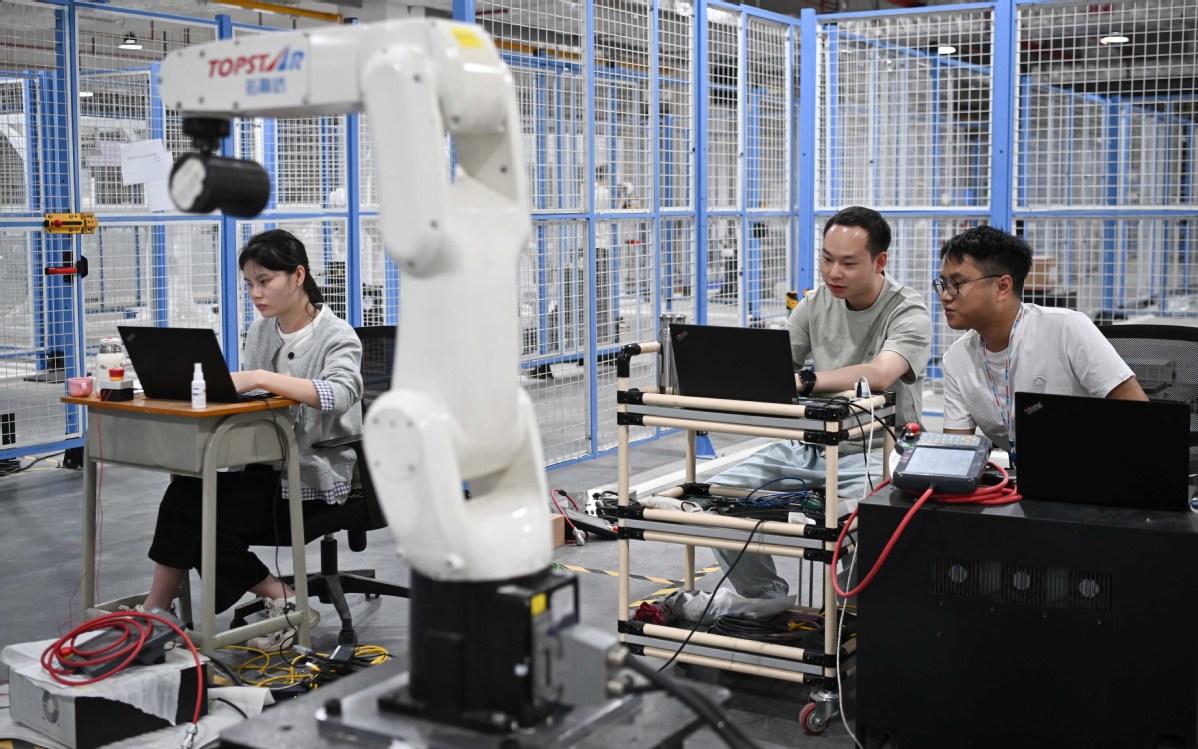The Path Forward

Throughout the 15th Five-Year Plan period, China plans to fully leverage its expansive domestic market, fast-track the development of new productive forces, and cultivate emerging industries such as AI, biotechnology, and new energy.
The highly anticipated Fourth Plenary Session of the 20th Central Committee of the Communist Party of China (CPC) was held in Beijing from 20 to 23 October. During the meeting, participants reviewed and approved the Recommendations of the CPC Central Committee for Formulating the 15th Five-Year Plan for Economic and Social Development. The communiqué acknowledged the substantial progress made during the 14th Five-Year Plan period, while outlining the principal objectives for economic and social development in the 15th Five-Year Plan. It also laid out a detailed framework of tasks and strategic priorities designed to drive the country’s modernisation.
These priorities include building a modernised industrial system, boosting self-reliance and innovation in science and technology, strengthening the domestic market, promoting high-standard opening up, accelerating agricultural and rural modernisation, and advancing the green transition across all sectors. The agenda also highlights the need to improve public well-being and promote common prosperity for all.
Planning for the future
With 10 years remaining before 2035, the target year for the basic realisation of socialist modernisation, the 15th Five-Year Plan period will be critical for consolidating existing foundations and intensifying efforts towards this goal.
The plenary session outlined the main objectives of economic and social development during this period. These include significant advancements in high-quality development, substantial improvements in scientific and technological self-reliance and strength, fresh breakthroughs in deepening reform comprehensively, notable cultural and ethical progress across society, further improvements in quality of life, major strides in advancing the Beautiful China Initiative, and continued efforts to strengthen the national security shield.
Maintaining strong economic performance during the 15th Five-Year Plan period will primarily depend on advancing high-quality development, which remains the central task in the effort to fully build a modern socialist country.

One key focus is on building a modernised industrial system and reinforcing the foundations of the real economy. To this end, China will continue to prioritise the real economy, pursue smart, green and integrated development, and accelerate efforts to enhance capabilities in manufacturing, product quality, aerospace, transportation and cyberspace.
The communiqué emphasised that the share of manufacturing in the national economy should be maintained at an appropriate level, while a modernised industrial system with advanced manufacturing at its core is to be developed. China will upgrade traditional industries, foster emerging industries and those of the future, promote high-quality, efficient development in the service sector, and work towards establishing a modernised infrastructure system.
The aim is to make decisive progress over the next five years, so that by 2035, the nation’s economic, scientific, defence, and overall national strength – as well as its international influence – will have risen to significantly higher levels. The Chinese people will experience a more prosperous and fulfilling life, and the country will have largely realised socialist modernisation.
Optimism runs high about meeting these targets, given China’s remarkable progress during the 14th Five-Year Plan period. Over the past five years, the country’s annual gross domestic product (GDP) surpassed 130 trillion yuan ($18.3 trillion), with projections suggesting it will reach around 140 trillion yuan ($19.7 trillions) by the end of 2025, sustaining an average annual growth rate of 5.5 percent.
Per capita GDP has remained above $13,000 for two consecutive years, while China’s contribution to global economic growth has averaged nearly 30 percent annually, underscoring its role as a primary driver of the world economy. According to Zheng Shanjie, chairman of the National Development and Reform Commission, China’s consistent economic growth highlights the advantages of scale that come with being a major power, with total output steadily increasing year after year.
Sci-tech takes the lead
Amid a new wave of global scientific and technological revolution and industrial transformation, innovation worldwide has entered an unprecedentedly intensive and dynamic phase. Science and technology have become crucial drivers of productivity, supply capacity, and potential economic growth.
During the 14th Five-Year Plan period, China made remarkable strides in advancing its science and technology sector. Guided by the strategic goal of building China into a world-leading science and technology powerhouse by 2035, as outlined at the 20th National Congress of the CPC in 2022, China’s R&D expenditure intensity rose to 2.68 percent, surpassing the European Union average and approaching the OECD average of 2.73 percent.

According to data released by the Ministry of Science and Technology in September, total R&D spending in 2024 exceeded 3.6 trillion yuan ($506.3 billion), marking a 48 percent increase compared to 2020. China now boasts the world’s largest pool of R&D personnel, and funding for basic research reached 249.7 billion yuan ($35.1 billion), a rise of more than 70 percent from 2020.
Significant breakthroughs have been achieved in quantum science, life sciences, materials science and space science. Furthermore, China has ranked first globally for five consecutive years in the number of papers published in top international journals and in international patent applications.
At a recent press conference, Minister of Science and Technology Yin Hejun outlined the strategic priorities for China’s science and technology sector during the 15th Five-Year Plan period. The focus will be on fostering original innovation and breakthroughs in key technologies, with the aim of achieving landmark results that address national strategic needs. Efforts will also be directed at accelerating the integration of technological and industrial innovation, enhancing intellectual property protection, and supporting high-tech enterprises as well as SMEs. Efforts will be made to advance education, science, technology, and talent development in order to cultivate a strategic pool of skilled professionals. Moreover, the development of the Digital China Initiative will progress through a deeper integration of the digital and real economies, supported by the full implementation of the “AI+” initiative to empower all sectors.
Deeper opening up
The plenary session also emphasised expanding high-level opening-up, sending a clear signal that the country will continue to advocate openness as a key pathway to shared development.
Minister of Commerce Wang Wentao highlighted how China’s continuous efforts to open its economy have played a crucial role in driving reform and accelerating economic growth. High-standard opening up has become a central engine of China’s economic progress, as well as an essential source of vitality for the global economy. Amid rising unilateralism and protectionism worldwide, China remains steadfast in its commitment to deepening its openness and using its development to drive global openness.
The measures outlined include further expanding institutional opening-up, fostering innovative trade development, enhancing two-way investment cooperation, and advancing the high-quality Belt and Road Initiative.
Throughout the 15th Five-Year Plan period, China plans to fully leverage its expansive domestic market, fast-track the development of new productive forces, and cultivate emerging industries such as AI, biotechnology, and new energy. These initiatives aim to transform China’s domestic market into a global innovation hub, a platform for application, and a catalyst for shared prosperity.
Meanwhile, by building a world-class business environment and strengthening the rule of law in foreign-related sectors, China seeks to turn its large market into a significant opportunity for the world, allowing all countries to benefit from the new opportunities arising from China’s development.
As the world enters a period of profound transformation, the Fourth Plenary Session of the 20th CPC Central Committee has set the course for China’s next stage of modernisation. By reviewing the accomplishments of the 14th Five-Year Plan and laying out the strategic vision for the 15th, the meeting reaffirmed China’s confidence and determination to advance high-quality development, technological innovation, openness, and shared prosperity, all in the pursuit of the great rejuvenation of the Chinese nation.
 Facebook
Facebook
 Twitter
Twitter
 Linkedin
Linkedin
 Google +
Google +










